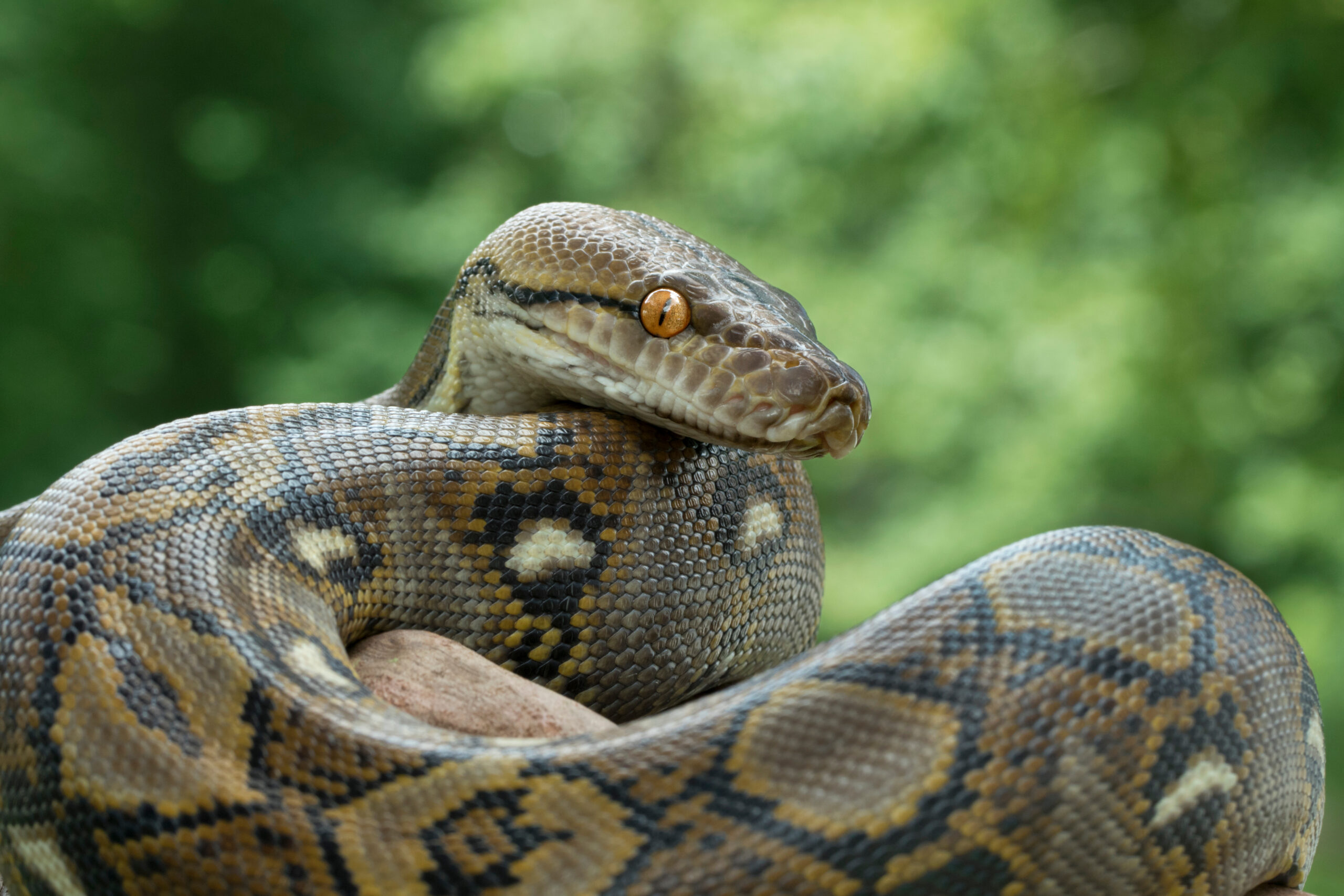North Carolina Man Survives ‘Worst Bite Ever’ By Deadly Venomous Snake
A North Carolina man was recently was bitten by one of, if not the world’s deadliest and most venomous snakes. Luckily a Myrtle Beach Fire Department paramedic and a doctor from Grand Strand Medical Center stepped in to help save the man’s life. The man was bitten by a Gaboon viper . While not native to North Carolina it is one of the deadliest and most venomous snakes in the world. Gaboon vipers are originally from Africa. The man, who is from Wilmington, was bitten while attempting to care for the reptile.
Thad Bowman and Dr. Jarratt Lark were called in from Myrtle Beach to help save the man’s life. “Patients that are bitten by these snakes often don’t survive,” Lark said told News 13. Both Bowman and Lark have experience with bites from exotic snakes so they were the natural choices to assist.
Gaboon vipers bite, immobilizing and digesting their prey in a matter of seconds. Blood clotting is also affected to the point that the person’s blood cannot clot. All of those effects were experienced by this man.
“We consulted with a doctor in Colorado who goes to Africa all the time,” Bowman said according to News 13. “From what he’s seen in the field there, and speaking with some other experts in Africa, this is going to be the worst Gaboon bite that’s ever survived.”
They treated the man with 44 vials of anti-venom. To put that in perspective it’s more than twice what would be used for a rattlesnake bite. Still, the man spent months in the hospital completing physical therapy and dialysis. He also suffered the loss of some fingers. However, he is finally back to living a normal life.
Both Bowman and received a Civilian Life Saving award for their life-saving efforts.
North Carolina has Six Venomous Snakes On Our Ultimate Snake List








